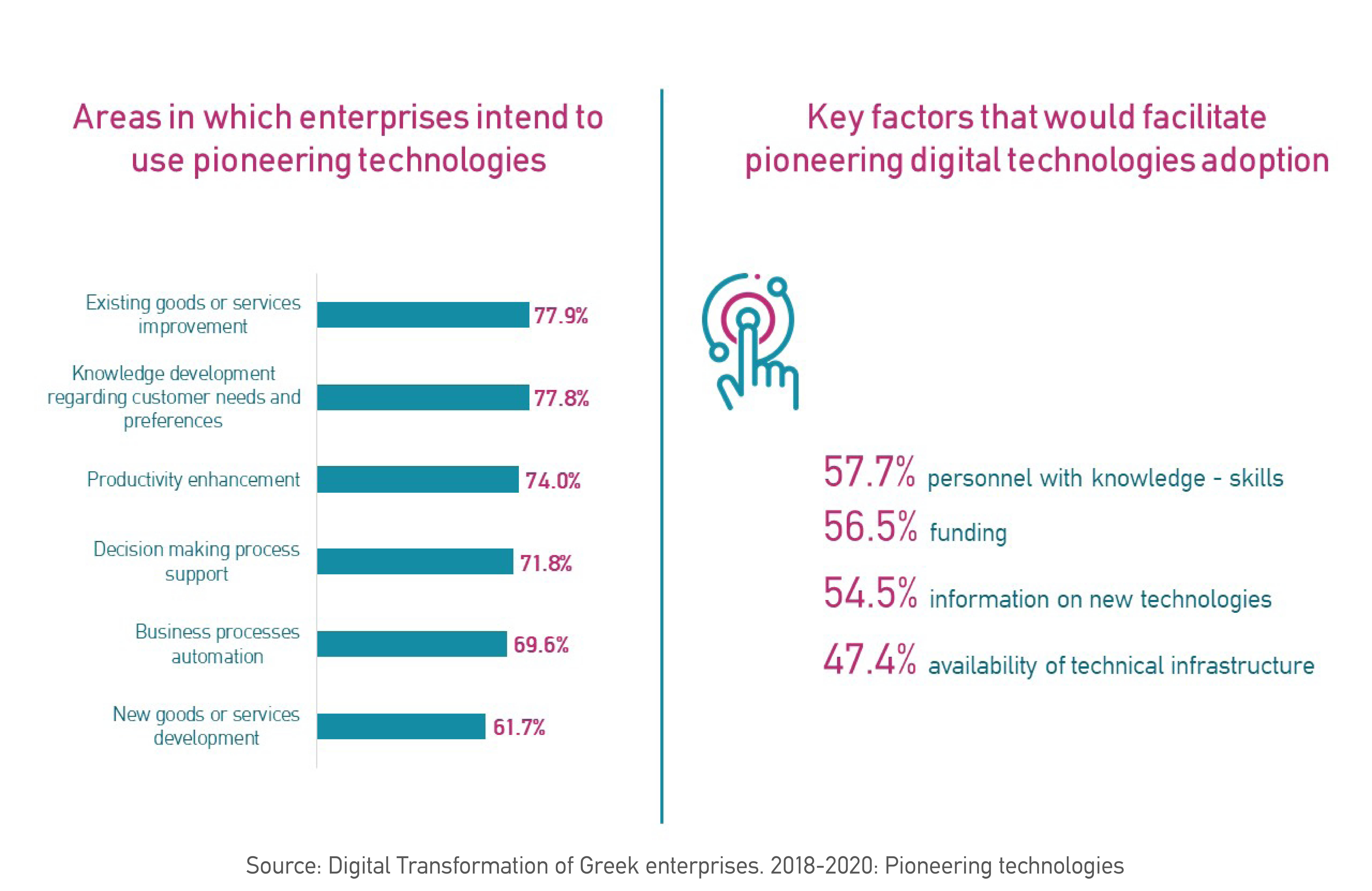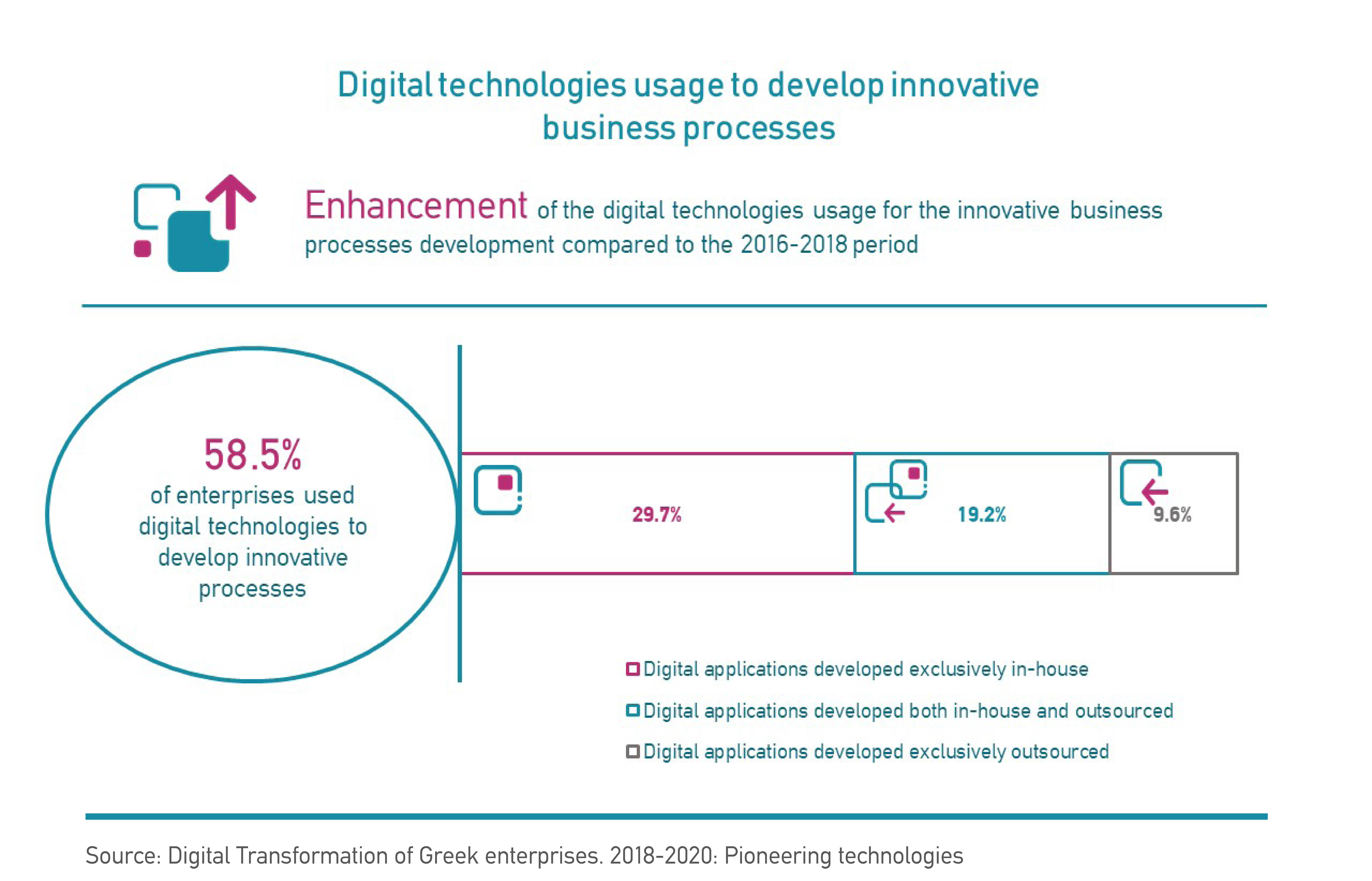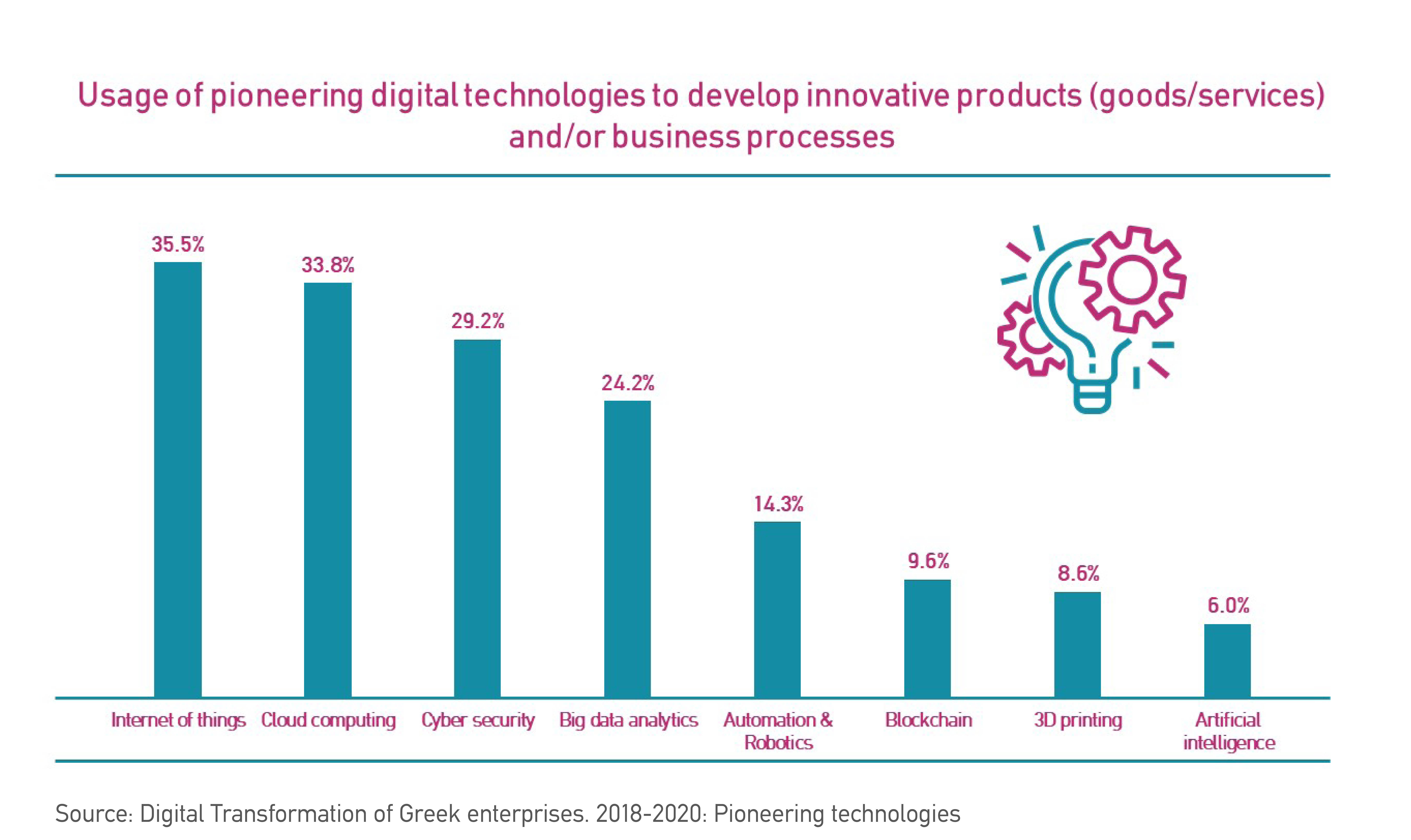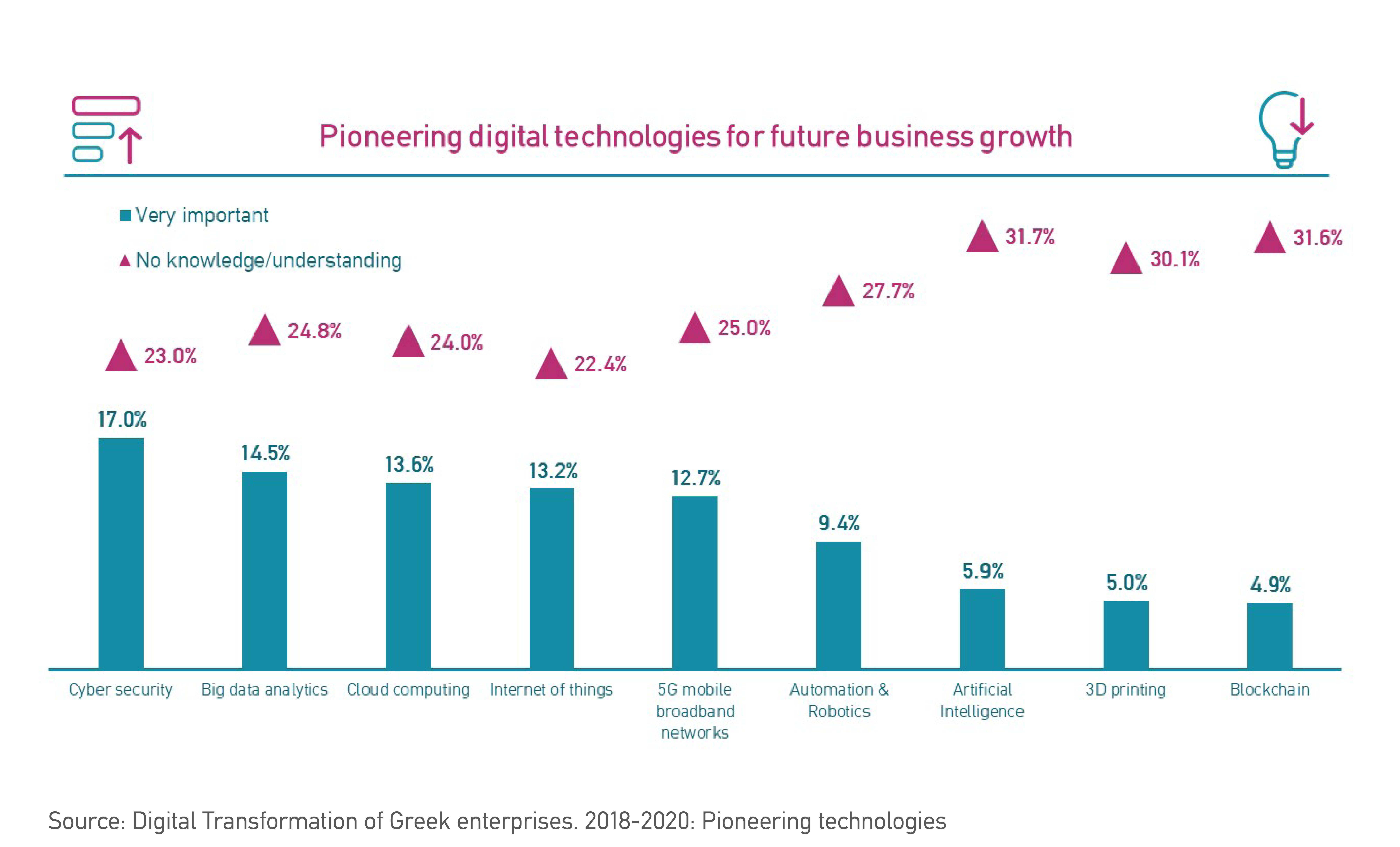Digital Transformation
The digital transformation of Greek enterprises has been at the heart of the research and statistical activity of the National Documentation Centre (EKT), by providing data and insights into the national research and innovation system and contributing to evidence-based policy-making.
40.2%

of Greek enterprises considers Digital Transformation as a very important continuous growth strategy
41.7%

of Greek enterprises considers the emphasis on digital technology for the goods/ services improvement and development as the most pivotal strategic area of Digital Transformation
58.5%

of Greek enterprises used digital technologies for the development of innovative processes


















